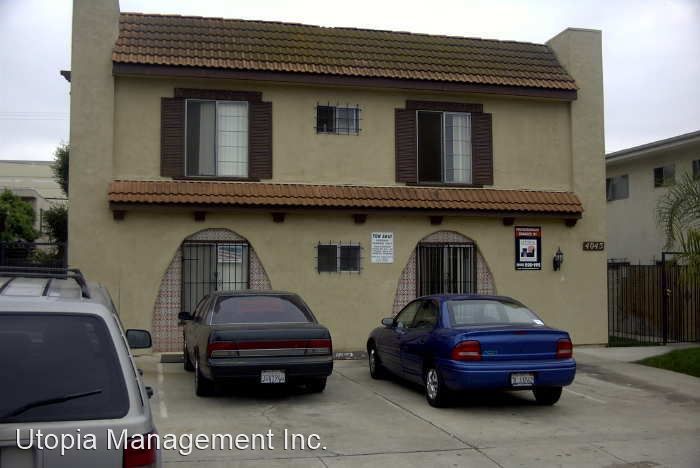
You may be interested in buying an investment property. An investment property manager can help. A property manager will help you to reduce stress and maximize your investment. You should choose the right manager to manage your investment property, especially if you're a new landlord.
There are many ways to manage your rental properties. Some investors decide to manage the properties themselves. Others hire a professional. It all comes down to how much money you are willing and able to spend on your property, as well as how much time you can devote to it.
Property management is a highly complex industry. You should find a property management company that has the necessary knowledge and experience to handle the unique challenges of your type of investment. They will need to be able deal with tenants, evictions, and even marketing to tenants to bring in good tenants.

One of the perks of hiring an investment property manager is that you are freed up to focus on your own business. While having a property manager can make life easier, you should also remember that each property's responsibilities will be different. For example, some managers will be tasked with promoting your property, while others will be responsible for maintenance.
The ability to self-manage a rental property is a great way of making a profit but can be daunting. For instance, you have to be on top of maintenance, vacancy, and taxes. Aside from that, you should be available to assist in any emergency at any hour of the night or day.
The best property management systems consider all of the needs of the parties involved. Your investment property manager will therefore be able to offer multiple services, making your experience as efficient and pleasant as possible.
A good investment property manager can make your properties more profitable and provide you with the security you want. Whether you are a new investor or an old hand, your manager should be able to help you achieve your financial goals.

A property manager isn't for everyone but it might be worth it. A property manager might be worth paying only a fraction to manage your property. Furthermore, a professional property manager can help you save more than your hard earned money.
Of course, you should never forget to do your own due diligence before hiring an investment property manager. Ask about their fees and find out if they are able to meet your expectations. Make sure to research their clients. You can also ask for information about upcoming vacancies by looking at their references.
Aside from marketing and maintaining your investment property, a great property manager should be able to provide you with a list of local contractors and handymen that you can call on when the need arises. This will give your peace of mind as well as help you to keep your property in great shape.
FAQ
Why should I hire someone to do the job instead of doing it myself.
It's a great way to save time and money by hiring a handyman. This saves you time and money. Additionally, the handyman has all the tools and supplies required to do the job properly.
What are the most frequent handyman repairs that you need to make?
Handymen often repair roofs, windows and doors, doors, gutters. Decks, fences and sheds are all common repairs. Handymen can assist homeowners who need help building or renovating their homes.
Can a handyman give me suggestions for how to improve my home's condition?
Absolutely! Handyman training is in all areas of home repairs and maintenance. He or she will know what needs to be done and what won't. Don't be afraid to ask for help whenever you need it.
What is the difference in a handyman and carpenter?
Handymen can be hired to help with a variety of projects such as painting, plumbing and electrical installation, cabinet making, flooring, tile, kitchen remodeling, furniture assembly, and cabinet repair. Carpenters specialize in woodworking. Carpenters can construct cabinets, doors, windows and stairs.
What happens if a handyman causes damage and I am unsatisfied with his work?
It is your responsibility to notify your client immediately if any problems arise during the project. It's best to write down exactly what happened and include photos of the problem area. Then contact your insurance company and file a claim.
Statistics
- Mila keeps a commission of 20% for each completed service performed by Friends and charges various service fees regarding work done by Pros. (appjobs.com)
- Another estimate was that the market in the United States was $126 billion and was increasing by about 4% annually. (en.wikipedia.org)
- More than 20% of homes in America have outdoor living spaces, including decks and patios. (mrhandyman.com)
- A franchise was approximately $110,000 with a franchise fee of $14,900, according to a spokesperson for a national handyman franchise. (en.wikipedia.org)
- According to the U.S. Bureau of Labor Statistics, in May 2020, there are 1,357,630 handymen employed in the U.S.. (angi.com)
External Links
How To
How to replace a broken tile
Step 1: Remove the old tiles.
Removing the tiles from your flooring is a good idea. These tiles should be kept intact in case you need them again. You can note the parts that are missing or damaged so that you can find replacements.
Step 2 - Choose New Tiles
Take a look at some different options available for tile replacement.
-
Find a new tile that's similar to the one you removed.
-
To find the matching piece, use the measurements that you took while removing the tile. This will make it much easier to find the right size without measuring again.
-
Consider looking for colors, patterns, textures and sizes in a variety of shapes and colors.
-
Consider what grout you'd like to use (if any). Some prefer a solid color, while others like mixing it up.
-
Make sure the tile you select is resistant to moisture.
-
Finally, consider the placement of your new tile -- you can save time and money by ensuring the area you're installing it in has enough space for proper installation.
-
Once you've chosen your tile, order it online or call your local Lowe's store to place your order.
Step 3 - Install the new tiles.
Use the same method as before to install your new tiles. Make sure they are aligned correctly so that they fit together perfectly.
Step 4 - Clean up
Make sure to clean up all debris and other materials before applying the final layer of protection material.
This will prevent dirt and dust from settling into the cracks between the tiles that could cause mold.
Step 5: Sand down the Floor
After everything has been cleaned, sand it down to remove any remaining particles from the previous steps.
Step 6 – Finish Off
Apply the protective coatings once the floor is smooth. It is important to wait before you apply the protective coatings.
For stain protection, you can always use a product called "damp&dry" to clean your floors.
However, it won't cover every possible problem that may occur after you've installed your new tiles. If you have children, an anti-slip coating may be a good idea.
Last but not least, be sure to leave the protective sealing on for several weeks before you return to your home.